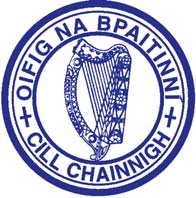| 2005 |

|
YEAR BOOK |
Patents Office
|
The International Patent Classification System (IPC)
|

The IPC is a hierarchical system in which the whole of technology is divided as follows: 8 sections, 21 subsections, 120 classes, 628 subclasses and over 69,000 groups. The sections are: A-Human Necessities; B-Performing Operations; Transporting; C-Chemistry; Metallurgy; D-Textiles; Paper; E-Fixed Constructions; F-Mechanical Engineering; Lighting; Heating; Weapons; Blasting; G-Physics; H-Electricity.
The subsections have titles, e.g. Section A "Human Necessities" has the following four subsections: Agriculture: Foodstuffs; Tobacco: Personal or Domestic Articles: Health; Amusement.
Each class has a title and a symbol. The symbol consists of the symbol of the relevant section followed by a two-digit number e.g. subsection "Foodstuffs; Tobacco" has the following four classes:
|
A 21 Baking; Edible dough
A 22 Butchering; Meat Treatment; � A 23 Foods or foodstuffs; � A 24 Tobacco; Cigars; Cigarettes; � |
Each subclass has a title and a symbol. The symbol consists of the symbol of the relevant class followed by a capital letter. For example, class A 21 ("Baking; Edible dough") is divided into three subclasses (B, C, D) as follows:
|
A 21 B Bakers' ovens; Machines �
A 21 C�Machines or equipment for making or processing dough; � A 21 D Treatment, e.g. preservation, of flour or dough, e.g. by addition of materials. |
Each main group and subgroup has a title and a symbol. The symbol consists of the subclass symbol followed by two numbers separated by an oblique stroke. For a main group, the second number consists of two zeros, e.g. subclass A 21 B has five main groups, the first two of which are:
|
A21 B 1/00 Bakers' ovens
A21 B 2/00 Baking apparatus employing high-frequency or infra-red heating. |
The main group A 21 B 1/00 ("Bakers' ovens") is divided into 19 subgroups, the first four of which are:
|
A 21 B 1/02�. characterised by the heating arrangements
A 21 B 1/04�. . Ovens heated by fire before baking only A 21 B 1/06�. . Ovens heated by radiators A 21 B 1/08�. . . by steam-heated radiators |
Not all the subgroups are on the same hierarchical level; the highest are preceded by one dot, the lower � according to their level � by two, three, four or more dots. However, the symbol does not indicate the hierarchical level of the subgroup. Most patent data is stored in databases that contain bibliographic data (including the IPC symbols), abstracts, titles and even the full text of patent documents. Increasingly, many of these databases, such as that belonging to the European Patent Office (EPO), are available for searching on the Internet.
At www.wipo.int/classifications/ipc/en/index.html a detailed guide to the IPC can be found. For further information on this or any other IP matter, please visit our website at www.patentsoffice.ie , or contact us either in Kilkenny (Lo-call 1890-220223) or Dublin (Lo-call 1890-220222).